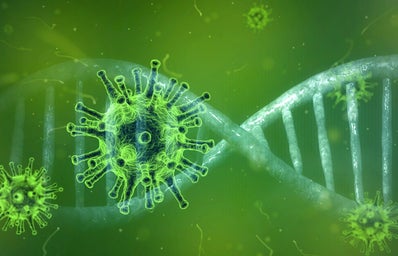The breakthrough of using umbilical cord blood to cure a patient of their HIV has marked a major step in gene therapy to treat the Human Immunodeficiency Virus, but is it a viable treatment for others living with HIV?
In the United States, a 64-year-old leukaemia patient living with HIV became the first woman (and third patient in total) to be cured of the virus. As a result of a stem cell transplant from umbilical cord blood, the patient has since been living with an undetectable viral load for 14 months after stopping their antiretroviral treatment.
What makes this treatment special?
Although the patient isn’t the first to be cured of their HIV, the use of umbilical cord blood had never been considered as a working cure for HIV. The results mark a big step – promising great hope for the future of HIV treatment.
Previous cures for HIV had used stem cells from adult donors, not umbilical cord blood from a donor with natural immunity to the AIDS-causing virus. Using umbilical cord blood is considered an easier approach to bone marrow transplants as it does not require a perfect match from the donor to host.
What does this mean for others living with the virus?
However, despite the medical breakthrough, the surgical treatment is an intensive and risky procedure, thus, using it as a widespread treatment for HIV isn’t considered to be possible.
This is because bone marrow transplants require large amounts of chemotherapy before the transplant, which isn’t considered to be safe for those without cancer living with HIV.
The intensity of the treatment also makes it expensive and long and realistically not a viable cure for those living with HIV in low-income countries. This is important to consider, given that sub-Saharan Africa is home to two thirds of the world’s total HIV cases and yet is considered as low-income.
So, what can we learn?
The takeaway of the news is that more and more research is going into gene therapy as a possible future cure for HIV.
While bone marrow transplants might not be the direct cure, studies using similar approaches could give rise to a distant future where HIV can be cured.
In the meantime, it is still recommended that people living with HIV continue to take the prescribed antiretroviral treatment to enjoy a healthy and fulfilling life.
Terminology used:
Antiretroviral treatment: Treatment to reduce the HIV viral load of those living with HIV.
Viral load: The amount of HIV in the blood. The higher the viral load, the more progressed the HIV is.
Undetectable viral load: HIV levels that are so low they cannot be detected and therefore the HIV is untransmissible.
Stem cell transplant: A surgical transplant that replaces current affected bone marrow with healthy cells.
Umbilical cord blood: The blood fromthe umbilical cord of a new-bornbaby collected from the placenta after childbirth.
References
https://www.bbc.com/news/health-60394306
https://www.theguardian.com/science/2022/feb/15/hiv-aids-cure-third-person-woman
https://www.who.int/news-room/fact-sheets/detail/hiv-aids
https://www.avert.org


